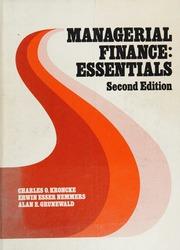Question
A wheat farmer expects to harvest 60,000 bushels of wheat in September. In order to pay for the seed and equipment, the farmer had to
A wheat farmer expects to harvest 60,000 bushels of wheat in September. In order to pay for the seed and equipment, the farmer had to draw $150,000 from his savings account on January 1 this year. He earns 4.8% p. a. on the savings account, and interest on the account accrues monthly in arrears. The farmer is worried about fluctuations in the wheat price and wishes to hedge the position. Wheat futures are currently quoted as:
| September | 341.0 cent/bu |
| December | 355.0 cent/bu |
Prices are in cents per bushel, and wheat futures contracts are per 5,000 bushels.
Questions:
1. Suppose the farmer could store up to 100,000 bushels of wheat at the same price as we used in 1200 per month, i.e. the marginal costs of storage are zero. Is there an opportunity for making money in this case?
2. Harvests are usually not that predictable. The total amount harvested depends on the weather. Unfortunately, whenever the weather is good for one farmer, it is typically good for many and the price of wheat is accordingly lower. Suppose harvests are of only two types: they are either good or bad with the following outcomes:
|
| Good Harvest | Bad Harvest |
| Quantity | 70,000 bu. | 50,000 bu. |
| Price (Spot, Sept) | 320 cents/bu. | 360 cents/bu. |
Is the hedge you constructed under 1. still optimal? As personal financial advisor to the farmer, what other strategy might you recommend?
Step by Step Solution
There are 3 Steps involved in it
Step: 1

Get Instant Access to Expert-Tailored Solutions
See step-by-step solutions with expert insights and AI powered tools for academic success
Step: 2

Step: 3

Ace Your Homework with AI
Get the answers you need in no time with our AI-driven, step-by-step assistance
Get Started


